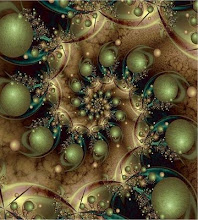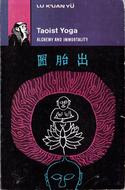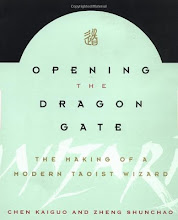Swamiji and the Discovery of Sunyoga
(Written in november 2000)
Sunyogi Umasankar was born into a Hindu family in West Bengal, near Calcutta in 1967.
Living next to an ashram throughout his childhood, he developed an early interest in Yoga and religion. By the age of eighteen, having spent a large proportion of his life practicing Yoga, he made the decision to dedicate part of his life to walking through every state of India spreading the message of ‘Universal Unity, Peace and Brotherhood’.
Although his spiritual training is from a Hindu background, Umasankar-ji’s message has always been directed at people of all religions.
His ideas are based on a religion of humanity that makes no distinction between colour, race or religion… a path for all mankind with a common goal that is unity, peace and brotherhood.
Umasankar-ji’s journey through India did not start until 1997. For two years prior to his journey Umasankar-ji stayed in Aurobindo assram in Pondicherry practicing Yoga and making many important discoveries. The most important of his discoveries was ‘Sunyoga’.
Very little is known about Sunyoga; it is briefly mentioned in some of the ancient Indian scriptures, but at the time of Umasankar-ji’s discovery, only one other person (Hira Ratan Manek) was known to be practicing it in the modern world. Now, five years later, there are an estimated 10,000 people throughout India practicing Sunyoga, taught by Umasankar-ji on his travels.
Sun Yogi Umasankar
Pondicherry is on the coast of south east India, looking over the Bay of Bengal. During his time at the ashram, Umasankar-ji spent every morning meditating on a rock looking out at the sun’s reflection off the sea. His daily meditation upon the reflected sunlight gave him great pleasure, but at this time he did not consider it to be a form of Yoga.
As he continued though, Umasankar-ji became aware that, through this method of meditation, he was somehow able to absorb powerful energies from the sun’s rays. Umasankar-ji began to experiment by looking directly at the sun – initially as it was rising, then day by day he began to concentrate on it as it rose higher into the sky. He continued his meditation and after a couple of months the sun started to appear as a “clear hazy ring with soft blue sky inside”.
The harsh brightness disappeared and he felt it become increasingly soothing. As time went on, he started to see “seven bright colours radiating from the sun, slowly reaching closer to the ground”.
Three months after starting his concentration on the sun, Umasankar-ji felt these rays – the sun’s cosmic energy – touch his body, creating within him an undescribable feeling of peace and calm.
Shortly after this experience, Umasankar-ji returned to the ashram to eat his usual food, but he found that he was unable to digest his simple plate of chapatis. His body rejected the food, yet he felt that he was fully nourished.
During his three month period of concentrating on the sun, Umasankar-ji had developed a great interest in the way that trees and plants are able to receive energy directly from sunlight. His discoveries now made him believe that he had found a way of absorbing the sun’s energy directly into his body, charging his body’s cells with kinetic energy and therefore removing the need to eat food.
So, as an experiment, Umasankar-ji stopped eating breakfast and continued concentrating on the sun. Six months later, he stopped eating his dinner, then six months after that, he stopped eating food at all. From the 17th August until the 7th December 1996, Umasankar-ji stopped eating and sleeping altogether.
His body weight remained the same and he continued his daily routine working in the assram in a perfect state of health. Shortly after this period of his life, he began his journey through India teaching his discoveries to people he met along the way. During his travels, he has become a source of great interest to a number of scientific and medical research centres where he had his claims tested, examined and verified – at least up to the level of sophistication that modern scientific instruments are capable of reaching.

SupremeMasterTV.com
Photograph Meditation
 To practise photograph meditation, first you need a photograph of your own face with open eyes, not smaller than 12 x 10 cm. The photograph should be placed in front of you at the same height as your eyes, approximately 3 to 6 feet away, so that you can focus clearly on your open eyes in the photograph.
To practise photograph meditation, first you need a photograph of your own face with open eyes, not smaller than 12 x 10 cm. The photograph should be placed in front of you at the same height as your eyes, approximately 3 to 6 feet away, so that you can focus clearly on your open eyes in the photograph. Sitting in a comfortable posture, preferably in padmasana, sidhyasana or gomukasana , making sure that your spine is straight and relaxed, start looking at your two eyes in the photograph. Keep your eyes open and try not to blink, focus all your attention on the two eyes, and begin to calm your mind. Remain staring at the photograph, and do not shift your position. You should try to sit for a minimum of half an hour.
As your concentration develops, the eyes will become more clear and the rest of the face may seem to disappear or become out of focus. This is a good sign. Do not lose your concentration... allow yourself to sink deeper into the experience. Many people at this stage may feel uncomfortable or some fear. Do not worry, this is a sign that you are releasing negativity from a subconscious level. If you continue your concentration, then any negative feelings will disappear.
Once your concentration is fixed on two eyes, shift your focus to a single eye. Concentrating on one eye, continue calming the mind and observe the feelings that may arise in your body. The more calm your mind, the deeper you can go into the experience. At the beginning stage it is likely that many thoughts will enter your mind, disturbing your concentration. Don't worry, bring your attention back to the photograph, and allow your mind to relax and settle. Gradually the thought process will slow down and you will sink deeper into the meditation.
When your concentration is fixed on one eye, then narrow your focus onto just the pupil. ontinue the process. Once you have reached a certain level of concentration, you will see a point of bright light on the pupil. This light is a signal that you have achieved a high level of mind control, and that you have reached the start of the fourth stage, which is pranayama
Once the sadhak has reached this level, he/she will be able to safely practise pranayama breathing exercises (before reaching this stage, certain pranayama breathing exercises can be harmful). These breathing exercises will take place of their own accord with little effort from the sadhak, and will ultimately lead towards samadhi, the final stage of yoga at which point the soul will unite with the supreme soul.
Having discovered and fixed one's attention on the bright light on the pupil, the sadhak has completed the photograph meditation stage and is ready to move on to sunyoga.
Eye to Eye Meditation
 Eye to eye meditation is practiced in exactly the same way as photograph meditation (as described in the previous section), except that instead of looking at your own photograph, you sit opposite a partner and look into his/her yes.
Eye to eye meditation is practiced in exactly the same way as photograph meditation (as described in the previous section), except that instead of looking at your own photograph, you sit opposite a partner and look into his/her yes. This can be very useful when there is no photograph available, or if you are organising a mass-meditation. The principles are exactly the same as in photograph meditation, i.e. focusing on both eyes, then on a single eye, then on just the pupil. Through this technique you can also discover the bright point of light that signifies the start of the pranayama stage, as described in the photograph meditation page.
Sun Meditation
 To practice sun meditation, beginners should start by looking at the rising sun early in the morning. You can also look at the setting sun, but it is not as effective as at sunrise because the energy is decreasing.
To practice sun meditation, beginners should start by looking at the rising sun early in the morning. You can also look at the setting sun, but it is not as effective as at sunrise because the energy is decreasing. If you feel any trouble gazing directly at the sun, you should focus your gaze a short distance above the sun. Try not to blink, but if you feel discomfort, blink several times, then start again. If you do this three of four times, your resistance power will be increased and it will be easy to look at the sun. Then, we can gradually increase the time that we gaze at the sun.
Beginners should start looking each day for a short period, then day by day increase the amount of time so that the eyes can gradually adapt without any harm. It is very important to maintain regular practice, as it will allow your eyes to adapt properly. Some people may experience problems in the first few days, sometimes headaches or burning sensations in the eyes, or a 'sunspot' that affects your vision. This is quite normal, and the only way to overcome these problems is to continue practising. It is similar to any physical exertion that may cause stiffness or pain; it does not last long, and it is best removed by continuing the exercise.
 When you can continue staring at the sun for ten minutes, the sun will seem to disappear. The inside of the sun will appear as blue sky surrounded by a ring of light, it will sometimes appear as two suns, sometimes rotating clockwise or anticlockwise. As your concentration develops and you can gaze at the sun for longer, you will be able to see a 'black spot' in the middle of the sun. Sometimes this black spot will be bigger, at other times smaller. After practice, the black spot will remained fixed in one place. Suddenly, from this black hole, seven colours will emerge and move around the sun, sometimes clockwise, sometimes anti-clockwise. As your concentration increases, a powerful beam of light will come from the sun towards your body. In the beginning this beam of light will not touch the body, it will come towards you and then retreat back to the sun. Eventually, as your concentration improves, this light will touch your body and you will attain complete thoughtless condition. This is the start of the pratyaharam stage, and indicates the beginning of Sunyoga experience.
When you can continue staring at the sun for ten minutes, the sun will seem to disappear. The inside of the sun will appear as blue sky surrounded by a ring of light, it will sometimes appear as two suns, sometimes rotating clockwise or anticlockwise. As your concentration develops and you can gaze at the sun for longer, you will be able to see a 'black spot' in the middle of the sun. Sometimes this black spot will be bigger, at other times smaller. After practice, the black spot will remained fixed in one place. Suddenly, from this black hole, seven colours will emerge and move around the sun, sometimes clockwise, sometimes anti-clockwise. As your concentration increases, a powerful beam of light will come from the sun towards your body. In the beginning this beam of light will not touch the body, it will come towards you and then retreat back to the sun. Eventually, as your concentration improves, this light will touch your body and you will attain complete thoughtless condition. This is the start of the pratyaharam stage, and indicates the beginning of Sunyoga experience. After being touched by this light, a vibration will start from the heart, allowing us to control three negativities; shame, hatred and fear. With regular practice this vibration will increase and you will be able to gain control over five more negativities; anger, greed, narrow attraction, ego & jealousy. As the vibration increases you will be able to control sexual desire and lust. At this point, the pratyaharam stage is complete.
 The next step, as the inner vibration increases and extends from the muladhara chakra at the base of the spine to the sahasradhara chakra at the top of the head. This is the dharana stage.
The next step, as the inner vibration increases and extends from the muladhara chakra at the base of the spine to the sahasradhara chakra at the top of the head. This is the dharana stage. As the inner vibration develops, we'll discover that there are two more chakras, one above the head called the dhayana chakra and one below the body called the dhyanrodhak chakra. At this point, we will be able to hear a sound, which some people call AUM, others have called AMEN, while others have called it ALAM. We can then receive divine messages from the universe.
Next the sadhak will experience sahaja samadhi during which he will be able to see a bright light, inside of which there will be a beautiful structure. This is the atmadarsanam stage, the 'who am I' stage, the sadaguru stage, the mukha stage. At that time the sadhak will feel, 'I know him but i have never seen' because it has always been within... our sagunabramha structure. This marks the completion of the dhyana stage.
The final stage is nirvikalpa samadhi, at which point a further two chakras are discovered, one above the dhyana chakra called the samadhi chakra, and one below the dhayanarodhak chakra called the samadhirodhak chakra. Our mental force will be more than gravitational force, our soul will leave the body and unite with the supreme soul.
The Thirteen Stages of Sunyoga
1. Conquer all material desires.
(Sexuality, anger, greed, narrow-mindedness, ego & jealousy, shame, hatred and fear).
Related chakras: Anahata, Vishuhda, Agna, Monipur, Swadhisthan.
Related subtle body: Pratyahar body.
2. Develop Divine Energy.
Related chakra: Sahasrar & Muladhar.
Related subtle body: Dharana body.
3. Atma Darsanam - Discovery of Atma, the soul.
Related chakra: dhyana & dhyanarodhak.
Related subtle body: dhyana body.
4. Samadhi - Enlightenment.
Related chakra: samdhi & samadhirodhak.
Related subtle body: samadhi body.
5. Conquer hunger.
Related chakra: amrit chakra & amritrodhak.
Related subtle body: Amrit body.
6. Conquer thirst.
Related chakra: Jivanmukta chakra &jivanmuktarodhak chakra.
Subtle body: Jivanmukta body.
7. Conquer diseases.
Related chakra: rogamukta chakra & rogamuktarodhak chakra.
Subtle body:rogamukta subtle body.
8. Paramahansa - Adjusting the mind to all situations.
Related chakra: paramahansa chakra & paramahansarodhak chakra.
Subtle body: paramahansa body.
9. Having no enemies - all enemies will be friends (including animals).
Related chakra: chaityana chakra and chaityanarodhak chakra.
Subtle body: chaityana body.
10. Longetivity (this happens when the body's vibration becomes the same as the environment's).
Related chakra:amar chakra and amarrodhak chakra.
Subtle body: amar body.
11. The body's vibration and earth's vibration will be equal.
Related chakras: Grahanusama chakra &Grahanusamarodhak chakra.
Subtle body: Grahanusama body.
12. The body's vibration and sun's vibration will be equal.
Related chakras: nakhatranusama chakra and nakhatranusamarodhak chakra.
Subtle body:nakhatranusama body.
13. The body's vibration and the vibration of the Universe (Supreme Soul) vibration will be equal.
Related chakras: brahmbhandanusama chakra & brahmbhandanusamarodhak chakra.
Subtle body: brahmbhandanusama body.
| Sungazing | Sunyoga |
|
| Teacher | Hira Ratan Manek | Sunyogi Umasankar |
| Goal | Quiet Mind, Positive Emotion, Healthy Body | Enlightenment, harmonization of man with the micro- & macrocosm, and beyond |
| Side effects | Heart opening | Quiet Mind, Positive Emotion, Healthy Body, heart opening, Kundalini awakening, natural pranayama, siddhis and more |
| Duration | At least 9 months | Unpredictable. Enlightenment can occur after only a few practice times. |
| Practice | Beginning at 10 sec; 10 sec daily be added | Beginning at 1 h, but less possible; period at your own choice |
| Energy intake | Looking directly into the sun necessary | Solar energy is absorbed by the eye, but by a special technique to protect the retina; looking directly into the sun is possible |
| Suntime | Possible in the first and last hour of sunshine | Possible at all times; for beginners morning sun is recommended, noon sun for advanced practitioners |
| Alternative meditations or to prepare | - | Eye-to-Eye and Photomeditation |
| Difficulty | Easy to practise | Easy to practise |
| Availability | Can be learned online | Can only be learned live at a workshop or by an experienced practitioner |
| Other sources | Book „Sungazing“ (german) | Two books upcoming |
| Homepage | englisch: www.solarhealing.com german: www.sungazing.de More websites available in other languages |
englisch: www.sunyoga.info german: www.sonnenyoga.org french: www.sunyoga.fr serbian: www.sunyoga-serbia.com More websites available in other languages |
Created by Stefan Stecker |
||












No hay comentarios:
Publicar un comentario